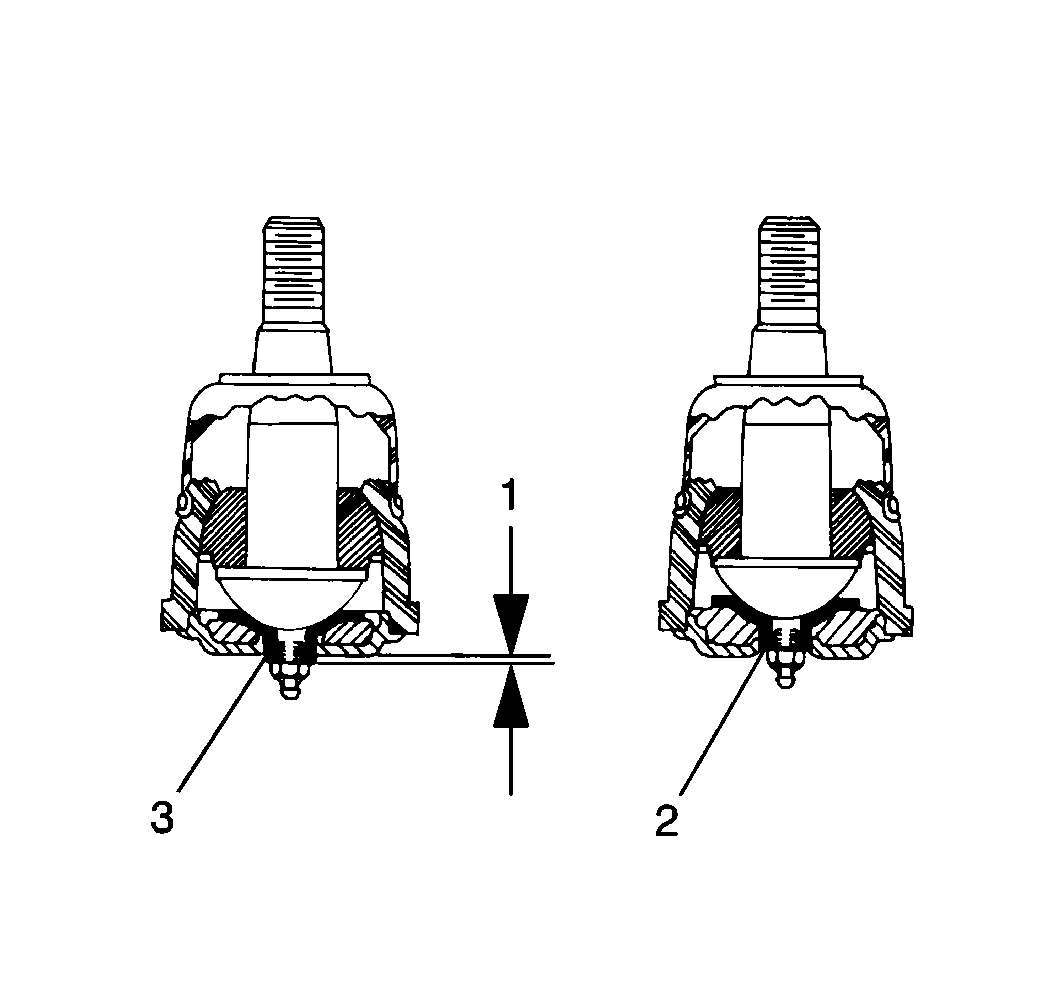
When checking the condition of the ball joint, be sure to follow the inspection procedure closely to prevent unnecessary ball joint replacement. During the inspection, have the vehicle supported by the wheels to insure that its weight is the loading ball joints.
The ball joint has a visual wear indicator. Wear is indicated by a 13 mm (0.50 in) diameter nipple retracting into the ball joint cover (the ball joint grease fitting is threaded into this nipple). The nipple protrudes 1.27 mm (0.050 in) (1) beyond the ball joint cover surface (3) on a new, unworn joint. Replace the ball joint if the nipple is flush or below the cover surface (2).
As part of the inspection, check the ball stud tightness in the knuckle boss. Check it by shaking the wheel and feeling for movement of the stud end or castellated nut at the knuckle boss. Checking the fastener tightness at the castellated nut is an alternative method of inspecting. A loose nut can indicate a bent stud or an opened-up hole in the knuckle boss. If worn, replace the ball joint and the knuckle.
If the ball joint is separated from the knuckle for suspension service, inspect the ball joint seal for damage. A damaged seal will cause joint failure. If seal damage is found, replace the ball joint.
